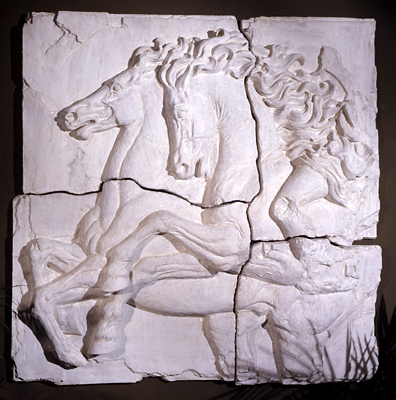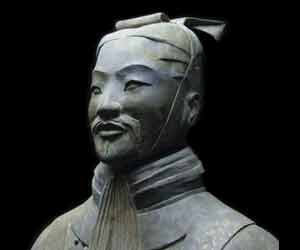
Retreat, Advance, or Stay the Course?
Late night Bruce Lee and Stephen Segal movies were my favorite in high school. Nowadays, I scan the listings for Jason Statham flicks, or maybe a Jackie Chan movie to watch with the family. These martial artists, of various backgrounds and training, offer fantastic performances. With balance, agility, and grace (and perfectly choreographed moves), they take on the Bad Guys. Victory is certain. No matter how big and strong their opposition is, or how many of them, our Hero is able to outwit and outmaneuver his opponent. Sometimes, it’s with the clever use of everyday objects, things lying within reach. Often, it’s a matter of the Hero using the forces, the energy of the Bad Guy, returning the momentum of a punch or a kick back to its source. The martial artist is one who looks for and realizes opportunities to use potential and kinetic energy in his favor.
Participation in Taekwondo the past several years has been enlightening. This particular discipline makes use of both attacks and defensive maneuvers (some martial art disciplines teach defensive maneuvers only), and the practice of a pattern, or “form”, is the primary way the student’s attention is directed to the management of their own energy. Footwork affects balance, chambering affects power, both affect the direction of energy….infinite combinations of taking, giving, or directing energy. An advance, an attack, is a direct method of “pushing” energy to another; a retreat, or withdrawal, is an indirect way to “draw” the energy from another, which can make it available for your own use. Directing the energy, both that which you send and receive, is how one may become master of all forces.
Participation in Taekwondo the past several years has been enlightening. This particular discipline makes use of both attacks and defensive maneuvers (some martial art disciplines teach defensive maneuvers only), and the practice of a pattern, or “form”, is the primary way the student’s attention is directed to the management of their own energy. Footwork affects balance, chambering affects power, both affect the direction of energy….infinite combinations of taking, giving, or directing energy. An advance, an attack, is a direct method of “pushing” energy to another; a retreat, or withdrawal, is an indirect way to “draw” the energy from another, which can make it available for your own use. Directing the energy, both that which you send and receive, is how one may become master of all forces.

“The direct method may be used for joining battle, but the indirect methods will be needed in order to secure victory. Indirect tactics, efficiently applied, are inexhaustible as Heaven and Earth, unending as the flow of rivers and streams; like the sun and moon, they end but to begin anew; like the four seasons, they pass away to return once more. In battle, there are not more than two methods of attack—the direct and the indirect; yet these two in combination give rise to an endless series of maneuvers. The direct and the indirect lead on to each other in turn. It is like moving in a circle—you never come to an end. Who can exhaust the
possibilities of their combination?” The Art of War, Sun Tzu on Energy
In horsemanship, it is not particularly useful to think of the horse as the “opponent”, or desire “victory” over him. What is more useful, and perhaps more interesting, is the understanding that a constant energy exchange happens between a horse and a human anytime they are in contact with each other. On the ground or in the saddle, the horse and the human are each in constant dialogue, transferring energy and movement to and from each other. Sometimes we “send” them a message, projected with our voice or body, and sometimes they “send” a message to us, in similar fashion. How we send these impulses, and what we do with those we receive, defines the quality of our horsemanship.
There are times in our relationship with horses, when an advance is necessary. Perhaps they’ve entered our personal body space, and we need to let them know they’re too close. Perhaps the advance is an escalation in subject matter during training, or intensification of stress, such as acclimating then to novel objects. When training a green horse, nearly every day of work will involve some sort of advance, as we daily introduce them to some extra task, added onto the prior day’s lesson. With an older or more seasoned horse, we may ask for mastery of things they had done only adequately the month before. We’ll intensify their focus, ask for escalating levels of precision in execution.
There are also other times when we need to retreat. It’s not only for our own safety that we would need to consider a retreat; there are times when this is psychologically the most beneficial for the horse. There are days we might have set a goal for ourselves, to ride around the section, to trailer to a show, to give the horse a bath and clip, or to take that green horse to the “next stage” of training. Sometimes, once we get into our project, we might realize we’ve asked more than the horse can give. Maybe the weather is changing, a storm is brewing, and riding around the section in a thunderstorm is not something your horse is feeling ready for. Maybe he’s tired of traveling to shows, and one more trailer loading is one too many. Maybe this is his first bath and clip, and the spraying water and buzzing clipper are more stimuli than he can stand. Listen to him. An educated equestrian needs to be able to read the horses’ body language, gauge his stress level, and understand that sometimes pushing ahead with our plan and violating the horse’s trust will set training back farther that retreating will. That little gesture of goodwill, of retreat, is what teaches the horse we are not going to harm him. Predators don’t retreat.
Then, there is "staying the course"….and what does that mean? Sometimes, you can spend time with a horse, not asking anything of him, not telling him anything, and not leaving him alone, feeling lonely. It is just a time of common sharing, a sort of equilibrium, the ideal balance of calm, quiet energy between two beings. It’s the perfection of silence, the decent of aids, and the ideal of all high horsemanship.
In horsemanship, it is not particularly useful to think of the horse as the “opponent”, or desire “victory” over him. What is more useful, and perhaps more interesting, is the understanding that a constant energy exchange happens between a horse and a human anytime they are in contact with each other. On the ground or in the saddle, the horse and the human are each in constant dialogue, transferring energy and movement to and from each other. Sometimes we “send” them a message, projected with our voice or body, and sometimes they “send” a message to us, in similar fashion. How we send these impulses, and what we do with those we receive, defines the quality of our horsemanship.
There are times in our relationship with horses, when an advance is necessary. Perhaps they’ve entered our personal body space, and we need to let them know they’re too close. Perhaps the advance is an escalation in subject matter during training, or intensification of stress, such as acclimating then to novel objects. When training a green horse, nearly every day of work will involve some sort of advance, as we daily introduce them to some extra task, added onto the prior day’s lesson. With an older or more seasoned horse, we may ask for mastery of things they had done only adequately the month before. We’ll intensify their focus, ask for escalating levels of precision in execution.
There are also other times when we need to retreat. It’s not only for our own safety that we would need to consider a retreat; there are times when this is psychologically the most beneficial for the horse. There are days we might have set a goal for ourselves, to ride around the section, to trailer to a show, to give the horse a bath and clip, or to take that green horse to the “next stage” of training. Sometimes, once we get into our project, we might realize we’ve asked more than the horse can give. Maybe the weather is changing, a storm is brewing, and riding around the section in a thunderstorm is not something your horse is feeling ready for. Maybe he’s tired of traveling to shows, and one more trailer loading is one too many. Maybe this is his first bath and clip, and the spraying water and buzzing clipper are more stimuli than he can stand. Listen to him. An educated equestrian needs to be able to read the horses’ body language, gauge his stress level, and understand that sometimes pushing ahead with our plan and violating the horse’s trust will set training back farther that retreating will. That little gesture of goodwill, of retreat, is what teaches the horse we are not going to harm him. Predators don’t retreat.
Then, there is "staying the course"….and what does that mean? Sometimes, you can spend time with a horse, not asking anything of him, not telling him anything, and not leaving him alone, feeling lonely. It is just a time of common sharing, a sort of equilibrium, the ideal balance of calm, quiet energy between two beings. It’s the perfection of silence, the decent of aids, and the ideal of all high horsemanship.
4.27.12 TME
Return to Educated Equestrian
Return to Educated Equestrian